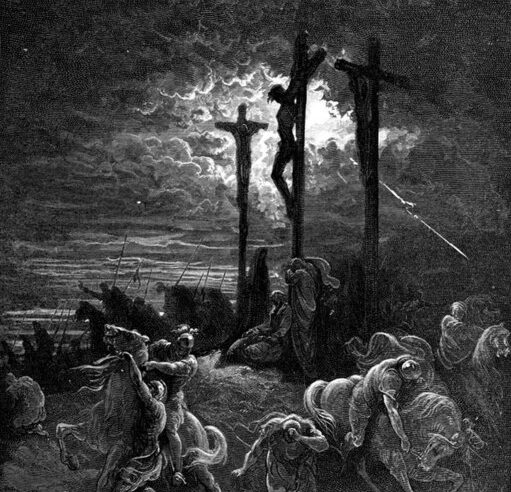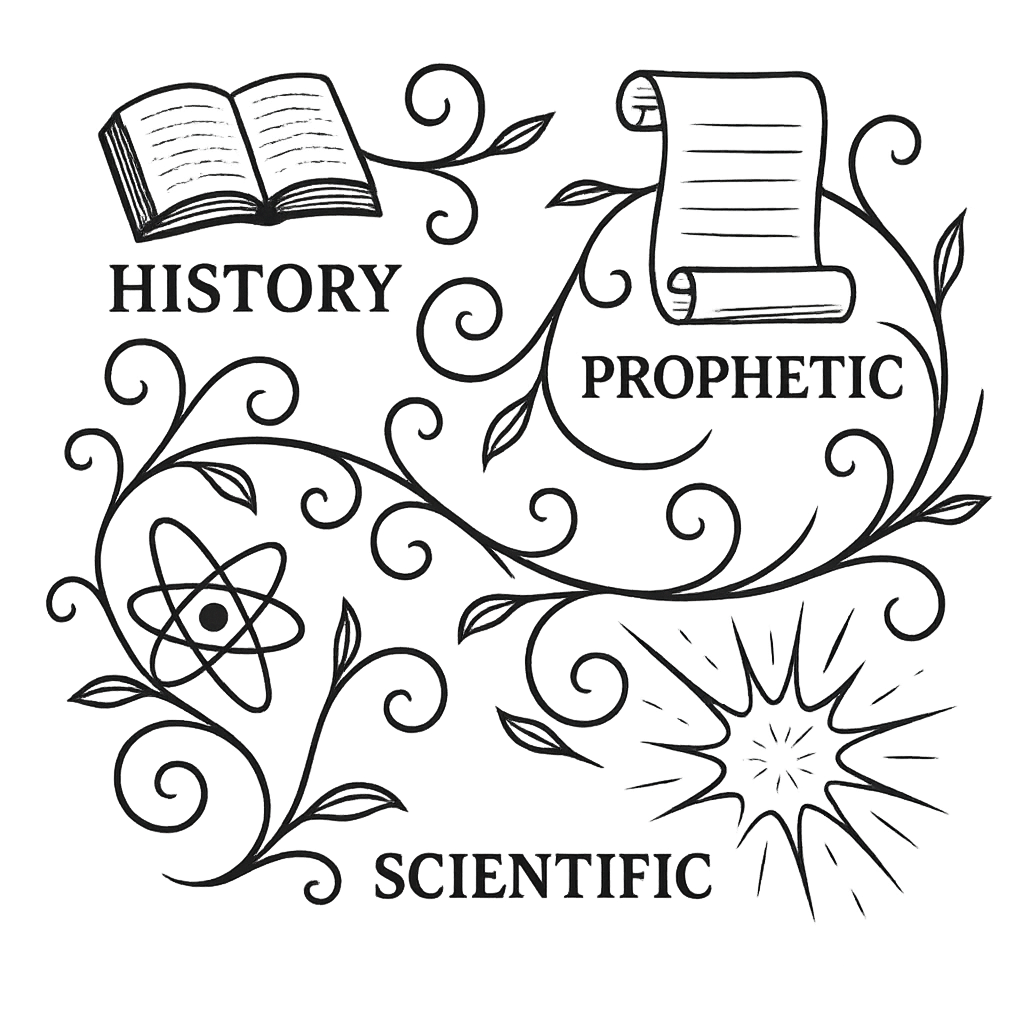
🌑 Ancient References to Darkness at the Crucifixion
Multiple ancient sources — Christian and non-Christian — report an unusual period of darkness during the time of Jesus’s crucifixion, traditionally dated around 30–33 AD. While the Gospel accounts describe this darkness as a supernatural event, several external sources appear to reference or attempt to explain a similar occurrence, including the historian Thallus, the Greek writer Phlegon, and even a Chinese imperial chronicle (Hou Hanshu). These reports describe solar eclipses or cosmic signs occurring around midday, often accompanied by earthquakes or societal unrest.
Although none of these sources explicitly link the event to Jesus (except the Gospels), the timing, descriptions, and consistency of the phenomena across widely separated cultures have led many to consider them as possible circumstantial evidence for the historical crucifixion and its associated signs — assuming the citations are accurate and the events genuinely occurred as described.
The table below summarizes the content, relevance, and limitations of each account. Further discussion of each source and its limitations is provided in the corresponding article.
🧠 Can These Be Linked?
| Source | Darkness | Solar Eclipse? | Earthquake? | Link to Jesus? | Notes |
|---|---|---|---|---|---|
| Gospels | ✅ Yes | 🟡 Implied supernatural | ✅ Yes | ✅ Direct | Primary theological account |
| Thallus (via Africanus) | ✅ Yes | ✅ Eclipse claimed | ✅ Via Africanus | 🟡 Inferred | Fragmentary, secondary |
| Phlegon (via Origen) | ✅ Yes | ✅ Eclipse-like / Darkness | ✅ Nicaea quake | 🟡 Inferred | Alignment in time and detail |
| Hou Hanshu | ✅ Yes | ✅ Eclipse-like | ❌ Not always included | ❌ No | Interesting global parallel |
Darkness: ✅ Yes
Solar Eclipse?: 🟡 Implied supernatural
Earthquake?: ✅ Yes
Link to Jesus?: ✅ Direct
Notes: Primary theological account
Darkness: ✅ Yes
Solar Eclipse?: ✅ Eclipse claimed
Earthquake?: ✅ Via Africanus
Link to Jesus?: 🟡 Inferred
Notes: Fragmentary, secondary
Darkness: ✅ Yes
Solar Eclipse?: ✅ Eclipse-like / Darkness
Earthquake?: ✅ Nicaea quake
Link to Jesus?: 🟡 Inferred
Notes: Alignment in time and detail
Darkness: ✅ Yes
Solar Eclipse?: ✅ Eclipse-like
Earthquake?: ❌ Not always included
Link to Jesus?: ❌ No
Notes: Interesting global parallel
📖 Source Quotes: Darkness at the Crucifixion
- Gospels
- Matthew 27:45: “From noon until three in the afternoon darkness came over all the land.”
- Mark 15:33: “At noon, darkness came over the whole land until three in the afternoon.”
- Luke 23:44–45: “It was now about noon, and darkness came over the whole land until three in the afternoon, while the sun’s light failed. And the veil of the temple was torn in two.”
- Context: Darkness occurs at midday and is accompanied by the tearing of the temple veil, emphasizing theological significance.
- Thallus (via Julius Africanus)
- Africanus reports: “Thallus, in the third book of his Histories, explains away this darkness as an eclipse of the sun.”
- Note: Original Thallus text is lost; Africanus interprets the darkness as a solar eclipse.
- Phlegon of Tralles (via Origen, Against Celsus, Book 2)
- Quote: “In the fourth year of the 202nd Olympiad, a great eclipse of the sun occurred together with an earthquake.”
- Context: Reports an eclipse-like darkness and earthquake; not explicitly linked to Jesus or Judea. Occurred around midday in Bithynia. Preserved by Origen, who used it to indirectly corroborate the Gospel accounts.
- Hou Hanshu (Book of the Later Han)
- Records: “An unusual darkness occurred in the sky; there were strange omens in the heavens.”
- Context: Chronological parallel around 31–33 AD; no reference to Judea or Jesus.
⚖️Rebuttal: Ancient References to Darkness at the Crucifixion
While it is true that several later writers mention unusual darkness or eclipses around the supposed time of Jesus’s death, the evidence is far weaker and less consistent than often suggested.
- Thallus (via Africanus): We have no surviving text of Thallus. The only reference comes from the 3rd-century Christian Julius Africanus, who quotes and interprets him. Since Africanus is writing centuries after the crucifixion and with a clear theological agenda, we cannot be sure what Thallus originally wrote, or whether it referred to Judea at all.
- Phlegon (via Origen and others): Phlegon does mention an eclipse and an earthquake, but not in connection with Judea or Jesus. Moreover, his eclipse supposedly occurred during the full moon of Passover, when a solar eclipse is astronomically impossible. The long duration he reports (hours) also makes it scientifically unreliable. Later Christian authors likely drew on his report as confirmation, but the match is tenuous.
- Hou Hanshu (Chinese annals): While this chronicle records eclipses and omens around 31–33 AD, such records were common in Chinese court history and usually symbolic, not precise scientific observations. The attempt to connect them with events in Judea is speculative and rests more on coincidence than evidence.
- The Gospels: The only direct link between the darkness and Jesus is found in the New Testament accounts themselves, which are theological narratives. Darkness functions symbolically in Jewish prophecy (Amos 8:9) and may reflect literary or theological purposes rather than historical observation.
Taken together, these sources do not form an independent or convergent line of evidence. Instead, they are fragmentary, secondhand, and often filtered through Christian apologists who sought to align natural phenomena with the biblical story. While intriguing, the case for a widespread historical darkness at the crucifixion remains unproven and is best explained as a combination of theological symbolism, misinterpreted astronomical events, and later harmonization.
🌘 Response: Darkness at the Crucifixion — Circumstantial but Worth Examining
The skeptic raises valid points about the fragmentary nature of these reports and the theological dimension of the Gospel accounts. It is important to stress that the references to darkness in Thallus, Phlegon, or the Hou Hanshu are not presented as decisive proof of the crucifixion, but rather as circumstantial evidence that may align with the biblical record.
- Thallus: Although we only know his words through Julius Africanus, the very fact that Africanus felt the need to address Thallus’s explanation (an eclipse) suggests that some tradition of an unusual darkness was circulating independently of the Gospels. Whether or not Thallus was describing the crucifixion event directly, his fragment shows that the memory of an extraordinary darkness was present outside Christian circles.
- Phlegon: While astronomical details make a literal solar eclipse at Passover impossible, Phlegon’s account of a long darkness and earthquake in roughly the same timeframe is striking. Even if imperfectly reported or later interpreted, it demonstrates that unusual natural events were remembered in that era and could have contributed to the Gospel writers’ framing of the crucifixion.
- Hou Hanshu: The Chinese chronicle should not be overemphasized, but it provides an intriguing example of how distant cultures also recorded “eclipse-like” events around the early 30s AD. Whether coincidence or not, it adds to the broader picture that something unusual was observed globally.
- The Gospels: Ultimately, the New Testament remains the only direct link between the darkness and Jesus. Theologically, the imagery clearly echoes Amos 8:9 (“I will make the sun go down at noon and darken the earth in broad daylight”), and thus the event may well be partly symbolic. That does not, however, preclude the possibility that a real natural phenomenon underlies the description, later given theological significance.
In conclusion, the reports of darkness at the crucifixion should be viewed not as a standalone proof but as a small piece of circumstantial evidence. On their own, they prove nothing; at most, they suggest that unusual cosmic or natural events were remembered around the early 30s AD. Whether one interprets them as symbolic fulfillment of prophecy or as traces of a historical phenomenon, their presence across multiple traditions is at least worthy of examination — even if their ultimate significance lies more in theology than in empirical history.
🌟 Conclusion
The accounts of darkness at the crucifixion occupy an unusual space between history, theology, and legend. On the one hand, the evidence outside the Gospels is fragmentary, secondhand, and often shaped by later interpretation, making it impossible to treat these references as definitive historical proof. On the other hand, the fact that multiple traditions — from Greco-Roman writers to distant Chinese chronicles — preserved memories of extraordinary cosmic disturbances around the same period is intriguing enough to warrant attention.
Ultimately, these reports should be seen as circumstantial evidence rather than conclusive demonstration. They neither establish nor undermine the crucifixion itself, which rests on far stronger historical grounds. Instead, the darkness may best be understood as a convergence of theology and memory: the Gospel writers framing Jesus’s death in light of prophecy (Amos 8:9), while independent traditions remembered unusual natural events in the same general era. Whether symbolic, providential, or natural, the theme of darkness highlights the cosmic weight the early church ascribed to the crucifixion — an event that, historically and spiritually, changed the course of the world.
📚 References
- Matthew 27:45; Mark 15:33; Luke 23:44–45 (ESV) – Gospel accounts of darkness at the crucifixion.
- Amos 8:9 (ESV) – Prophecy often cited as fulfilled in the darkness narrative.
- Julius Africanus, Chronography, 3rd century AD – Quotes Thallus regarding darkness at the crucifixion.
- Thallus (via Africanus) – Fragmentary report of unusual darkness, interpreted as a solar eclipse.
- Phlegon of Tralles (via Origen, Against Celsus, Book 2) – Reports an eclipse-like darkness and earthquake in roughly the same timeframe.
- Hou Hanshu (Book of the Later Han) – Chinese imperial chronicle recording eclipse-like or ominous events around 31–33 AD.
- Origen, Against Celsus, Book 2 – Cites Phlegon on darkness and earthquakes as indirect corroboration.
- Image Credits: Gustave Doré. Wikimedia Commons. Public Domain. Available here.

Leave a Reply